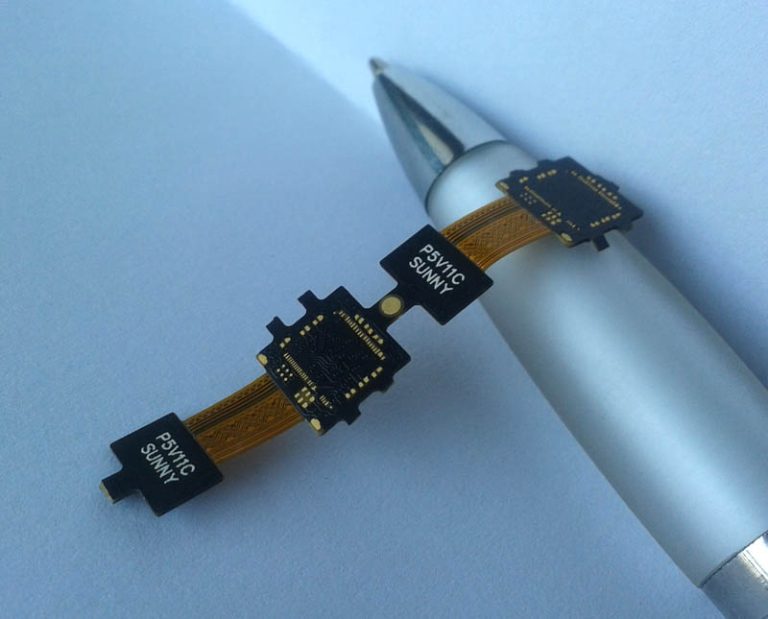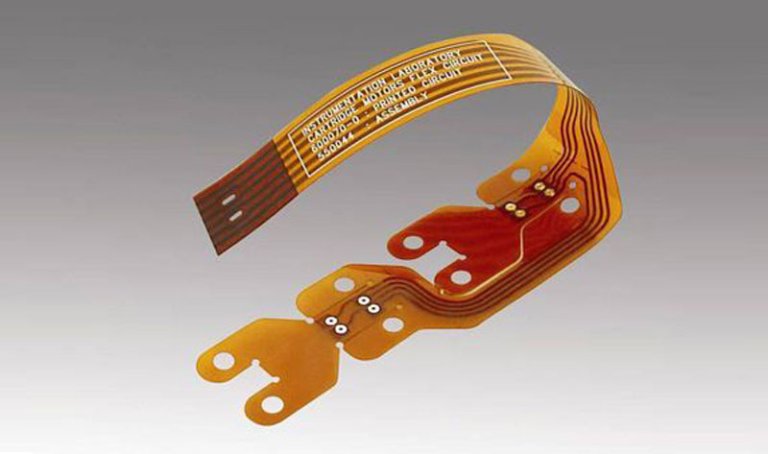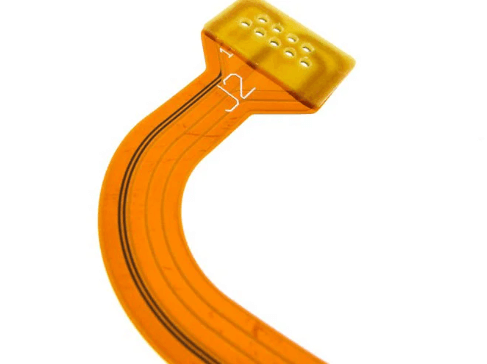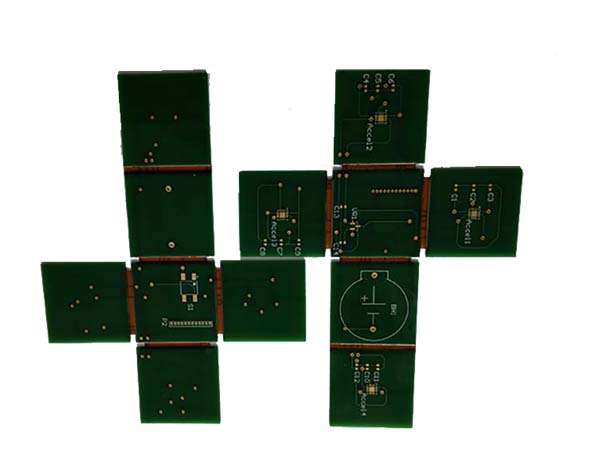Advantages of flexible pcb
The application advantages of flexible pcb in modern electronic equipmentThe application advantages of flexible circuit boards (Flexible PCB) in modern electronic equipment are obvious.
First, the design flexibility of flexible circuit boards allows them to adapt to a variety of complex geometries and space constraints.
This characteristic is particularly important in today’s trend of increasing miniaturization and complexity of electronic devices. By using flexible circuit boards, designers have more freedom in planning circuit layouts, resulting in more compact and efficient designs.
In addition, the light weight and thin thickness of flexible circuit boards give them significant advantages in portable electronic devices.
Compared with traditional rigid circuit boards, flexible circuit boards can significantly reduce the overall weight of the device, which is especially important for devices that need to be carried for long periods of time, such as smartphones, tablets, and wearable devices.
The lighter weight not only improves the user experience, but also reduces transportation and storage costs.
At the same time, the durability and reliability of flexible circuit boards cannot be ignored.
Flexible circuit boards excel in dynamic applications due to their ability to withstand repeated bending and twisting.
For example, in wearable devices and medical devices, circuit boards need to be bent and moved frequently, and the durability of flexible circuit boards ensures long-term stable operation of the device.
In addition, flexible circuit boards often use high-performance materials such as polyimide, which have excellent heat and chemical resistance, further improving the reliability of the circuit board.
Furthermore, the manufacturing process of flexible circuit boards also has certain advantages.
Although initial design and manufacturing costs may be higher, the production process of flexible circuit boards is relatively simple and can reduce assembly steps and soldering points, thus reducing the potential failure rate in production. This not only improves productivity but also reduces the need for later maintenance and repairs.
Finally, flexible circuit boards also excel when it comes to environmental protection.
Due to the particularities of their materials and manufacturing processes, flexible circuit boards generally have a long service life, reducing the generation of electronic waste. In addition, many flexible circuit board materials are recyclable, which helps reduce environmental pollution and resource waste.
To sum up, the application advantages of flexible circuit boards in modern electronic equipment are significant. Its design flexibility, light weight, high durability, simple manufacturing process and environmentally friendly characteristics make it an indispensable and important part of modern electronic equipment. With the continuous advancement of technology, the application prospects of flexible circuit boards will be broader, bringing more possibilities to the development of the electronics industry.

How flexible circuit boards improve the flexibility of product design
Flexible circuit boards play a vital role in the design of modern electronic products, and
This feature is particularly useful for devices that require a compact design, such as smartphones, wearables, and medical devices. By using flexible circuit boards, designers can use limited space more efficiently, resulting in smaller, lighter product designs.
In addition, the lightweight nature of flexible circuit boards is also a major advantage. Compared with traditional rigid circuit boards, flexible circuit boards are significantly lighter in weight, which is especially important for electronic devices that require portability.
For example, in the aerospace and automotive industries, reducing the weight of equipment not only improves fuel efficiency but also improves overall performance and reliability. Therefore, flexible circuit boards are increasingly used in these fields.
At the same time, the high reliability and durability of flexible circuit boards also provide more possibilities for product design.
Due to the particularities of its materials and structure, flexible circuit boards are able to withstand repeated bending and twisting without affecting their electrical performance.
This makes them excellent in equipment that requires frequent movement or operation, such as robots and industrial automation equipment.
By using flexible circuit boards, designers can ensure that products maintain stable performance in a variety of demanding environments.
Furthermore, the versatility of flexible circuit boards also brings more innovation opportunities to product design.
Not only do they serve as carriers for electrical connections, but they can also integrate various electronic components such as sensors, LEDs and antennas.
This increased level of integration not only simplifies the product assembly process, but also reduces potential failure points, thus improving the overall reliability and performance of the product.
Finally, the customizability of flexible circuit boards enables them to meet the specific needs of different application areas.
Designers can choose different materials, thicknesses and number of layers based on specific application requirements to achieve optimal performance and cost-effectiveness. This high degree of customization has led to flexible circuit boards being widely used in various industries, from consumer electronics to medical equipment to the military and aerospace fields.
In summary, flexible circuit boards significantly increase the flexibility of product design through their bendability, lightweight, high reliability, multifunctionality and customizability. These advantages not only provide designers with more creative space, but also promote the development of electronic products in the direction of smaller, lighter, and more efficient. With the continuous advancement of technology, flexible circuit boards will have broader application prospects in the future.
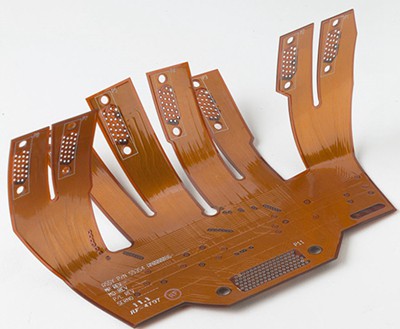
The unique advantages of flexible circuit boards in wearable devices
The unique advantages of flexible circuit boards in wearable devices are obvious.
First, the flexibility of flexible circuit boards allows them to adapt to a variety of complex shapes and curved surfaces, which is particularly important for wearable devices that are compact in design and need to fit the human body.
Traditional rigid circuit boards tend to be cumbersome when faced with these demands, while flexible circuit boards can easily cope with this, improving device comfort and user experience.
In addition, the lightweight nature of flexible circuit boards is one of the reasons why they are popular in wearable devices. Wearable devices are often worn for long periods of time, so weight becomes a key factor.
Due to the particularity of its materials and structure, flexible circuit boards can significantly reduce the overall weight of the device, thereby reducing the burden on the user. This not only improves the portability of the device, but also enhances the user’s wearing comfort.
At the same time, the high reliability and durability of flexible circuit boards also provide important guarantees for wearable devices. Since wearable devices are often exposed to various environmental conditions, such as sweat, moisture, and temperature changes, circuit board durability is particularly important.
Flexible circuit boards are typically made from durable polyimide or polyester materials
that maintain stable performance in harsh environments, extending the life of the device.
Furthermore, the design flexibility of flexible circuit boards provides more possibilities for innovation in wearable devices. Designers can flexibly adjust the shape and layout of the circuit board according to specific needs, allowing for more complex and multi-functional designs.
This design freedom not only helps improve the functionality of the device, but also meets user needs for personalization and aesthetics.
Additionally, flexible circuit boards are relatively cheap to produce, which is an important advantage for mass-produced wearable devices.
Although initial design and development may require some investment, the cost benefits of flexible circuit boards will become apparent once they enter the volume production stage.
This not only helps reduce the production cost of the device, but also enables more consumers to enjoy cost-effective wearable devices.
In summary, the unique advantages of flexible circuit boards in wearable devices cover many aspects such as flexibility, lightweight, high reliability, design flexibility and cost-effectiveness. These advantages not only improve the performance and user experience of wearable devices, but also provide a solid foundation for industry innovation and development. With the continuous advancement of technology, the application prospects of flexible circuit boards in wearable devices will become broader.

Contribution of flexible circuit boards to the lightweighting of electronic products
Flexible circuit boards play a vital role in the lightweighting of modern electronic products. First, the design of flexible circuit boards allows electronic products to significantly reduce weight without sacrificing performance.
Traditional rigid circuit boards usually require thicker materials to support their structure, while flexible circuit boards use thin-film materials, which not only reduces the amount of material used, but also reduces the overall weight.
In addition, the bendability and foldability of flexible circuit boards allow designers to more freely arrange the position of electronic components, thereby optimizing the utilization of internal space.
This optimization not only helps reduce product weight, but also makes it more compact and portable. For example, in smartphones and wearable devices, the application of flexible circuit boards allows these devices to become thinner and more portable while maintaining high performance.
Furthermore, the lightweight nature of flexible circuit boards brings other additional advantages. Due to the reduced weight, electronic products require less energy during transportation and use.
Not only does this help extend battery life, it also reduces energy consumption, allowing for a greener design.
In addition, lightweight electronic products are also more economical to ship, as shipping costs are often directly related to the weight of the product.
It is worth mentioning that the manufacturing process of flexible circuit boards also helps achieve lightweight goals. The production process of flexible circuit boards is more efficient and requires less material and energy than traditional rigid circuit boards. This not only reduces production costs but also reduces environmental impact. By using advanced manufacturing technology, flexible circuit boards can achieve lightweight goals while maintaining high quality and reliability.
In short, the contribution of flexible circuit boards to the lightweighting of electronic products is manifold. It not only reduces product weight by reducing material use and optimizing internal space layout, but also brings energy savings and environmental protection benefits. With the continuous advancement of technology, flexible circuit boards will play an increasingly important role in future electronic product design, providing a solid foundation for achieving lighter, more portable, and more efficient electronic products.
Analysis of the advantages of flexible circuit boards in complex circuit design
Flexible circuit boards (Flexible PCBs) play an increasingly important role in modern electronic equipment Its role is particularly significant in complex circuit design. First of all, the biggest advantage of flexible circuit boards is their excellent flexibility. Compared with traditional rigid circuit boards, flexible circuit boards can be bent, folded and even rolled, which allows them to adapt to a variety of complex spatial layouts and shape requirements. This characteristic is particularly important in electronic devices that require high-density wiring and compact designs, such as smartphones, wearables, and medical devices.
In addition, the lightweight nature of flexible circuit boards is also an advantage in complex circuit designs. Due to the use of thin film materials, flexible circuit boards weigh significantly less than traditional rigid circuit boards. This not only helps reduce the overall weight of the device, but also improves its portability and user experience. Especially in weight-sensitive fields such as aerospace and automotive electronics, the application of flexible circuit boards can significantly improve the performance and efficiency of equipment.
At the same time, flexible circuit boards also offer excellent durability and reliability. Its materials and structural design allow it to withstand repeated bending and mechanical stress without affecting electrical performance. This is especially important for equipment that requires frequent movement or operation. For example, in robotics and industrial automation equipment, flexible circuit boards can ensure long-term stable electrical connections, thereby increasing the reliability and service life of the equipment.
Furthermore, the design flexibility of flexible circuit boards also provides engineers with more room for innovation. Because it can be routed freely in three-dimensional space, engineers can use limited space more efficiently and optimize circuit layout and component arrangement. This can not only improve the performance of the circuit, but also simplify the manufacturing process and reduce production costs. Especially in multi-layer circuit design, flexible circuit boards can significantly reduce design complexity and manufacturing difficulty by reducing the number of layers and simplifying connections.
Finally, the environmentally friendly properties of flexible circuit boards cannot be ignored. The materials and processes used in its manufacturing process are relatively environmentally friendly, reducing environmental pollution. In addition, the high performance and long life of flexible circuit boards also help reduce the generation of electronic waste and meet the requirements of sustainable development.
To sum up, the advantages of flexible circuit boards in complex circuit design are manifold. Its excellent flexibility, lightweight properties, excellent durability and reliability, design flexibility, and environmentally friendly properties make it an indispensable and important component of modern electronic equipment. With the continuous advancement of technology, the application prospects of flexible circuit boards will be broader, bringing more possibilities to the development of the electronics industry.



